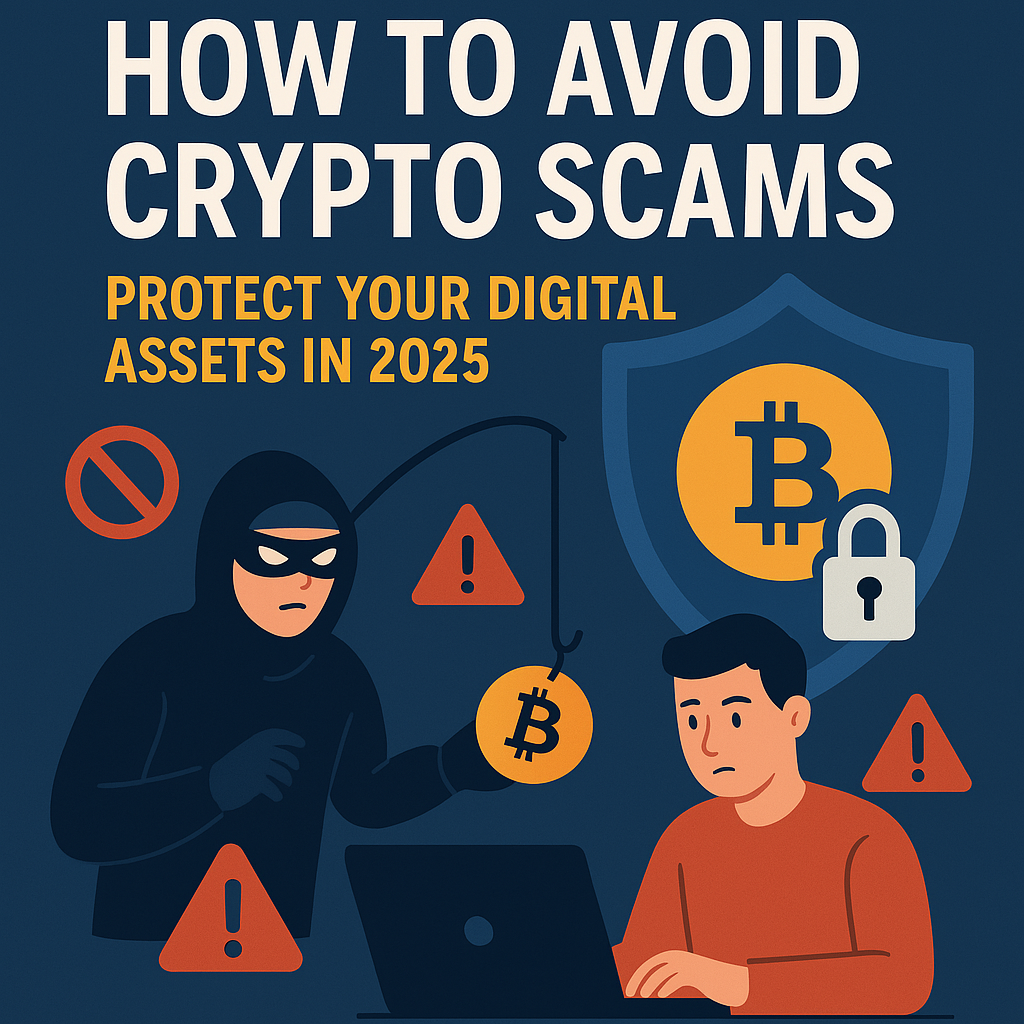
According to recent industry reports, cryptocurrency scams resulted in losses that jumped to $2.2 billion globally in 2024 alone. As digital assets become increasingly mainstream, learning how to avoid crypto scams has never been more crucial.
This comprehensive guide aims to equip both novice and experienced cryptocurrency investors with the knowledge and tools necessary to identify, avoid, and report cryptocurrency scams.
All information on Crypto Moth Hub is provided for educational purposes only. We are not financial advisors and nothing on this site should be interpreted as investment advice, financial guidance, or a recommendation to buy/sell any asset. Always do your own research (DYOR) and consult with a qualified professional before making any financial decisions. Crypto markets are volatile and carry risks. You assume full responsibility for your actions.
Understanding the Cryptocurrency World
Before diving into specific scams, it’s important to understand some fundamental aspects of cryptocurrency that make it both revolutionary and potentially risky:
Decentralization: Unlike traditional currencies, most cryptocurrencies operate without central authority oversight. While this offers freedom from governmental control, it also means there’s often no recourse if something goes wrong.
Pseudonymity: Cryptocurrency transactions don’t require personal identification, using cryptographic addresses instead. This provides privacy but can make it difficult to identify scammers.
Irreversibility: Once confirmed on the blockchain, cryptocurrency transactions cannot be reversed or canceled. There’s no “fraud department” to call if you send crypto to the wrong person or a scammer.
Market Volatility: Cryptocurrency prices can fluctuate dramatically in short periods, creating environments where scammers can capitalize on FOMO (Fear Of Missing Out) and market uncertainty.
Technical Complexity: The learning curve for safely using cryptocurrency can be steep, creating opportunities for scammers to exploit knowledge gaps.
Understanding these characteristics helps explain why cryptocurrency has become such a fertile ground for scams and why extra vigilance is necessary.
Common Types of Cryptocurrency Scams
1. Pump and Dump Schemes
How it works: Organizers artificially inflate the price of a low-value cryptocurrency through coordinated buying and misleading promotion. Once the price rises significantly, they sell their holdings, causing the price to crash and leaving other investors with worthless tokens.
2. Rug Pulls
How it works: Developers create seemingly legitimate cryptocurrency projects, attract investor funding, then abandon the project and disappear with the money. Often, they manipulate the smart contract to prevent investors from selling their tokens.
3. Phishing Attacks
How it works: Scammers create fake websites, emails, or social media accounts that mimic legitimate cryptocurrency platforms. When users enter their credentials or private keys, the scammers gain access to their actual accounts.
4. Ponzi and Pyramid Schemes
How it works: These schemes promise high returns from supposed investment strategies but actually use new investor funds to pay earlier investors. Eventually, they collapse when new investments slow down.
5. Fake ICOs and Token Sales
How it works: Scammers create fictitious cryptocurrency projects with impressive-looking websites and whitepapers, then disappear after collecting investor funds during the Initial Coin Offering (ICO).
6. Giveaway Scams
How it works: Fraudsters impersonate celebrities, influencers, or cryptocurrency companies on social media, promising to multiply any cryptocurrency sent to them (e.g., “Send 1 ETH, get 2 ETH back”).
7. Fake Exchanges and Platforms
How it works: Scammers create fake cryptocurrency exchanges that may function normally at first but eventually prevent withdrawals or disappear entirely with deposited funds.
8. Romance Scams
How it works: Scammers develop fake romantic relationships with victims, then convince them to invest in fraudulent cryptocurrency schemes or transfer crypto directly to the scammer.
Red Flags: How to Identify Potential Scams
Unrealistic Promises
Warning signs:
- Guaranteed returns or “risk-free” investment claims
- Promised daily or weekly percentage returns
- Claims of “insider information” or “secret” trading strategies
- Assertions of being “the next Bitcoin” or “100x potential”
Why it matters: Legitimate cryptocurrency projects acknowledge market risks. Any guarantee of specific returns is almost certainly fraudulent, as genuine cryptocurrency performance is influenced by market dynamics beyond anyone’s control.
Pressure Tactics
Warning signs:
- Urgency to invest immediately
- “Limited time” offers with countdown timers
- Claims that you’ll “miss out” if you don’t act now
- Pressure to recruit friends and family
Why it matters: Legitimate investment opportunities don’t need high-pressure sales tactics. Scammers create artificial urgency to prevent potential victims from researching thoroughly or consulting others.
Questionable Team and Background
Warning signs:
- Anonymous or pseudonymous team members
- Team photos using stock images or AI-generated faces
- Lack of verifiable credentials or experience
- No digital footprint for supposed team members (LinkedIn, GitHub, etc.)
Why it matters: Reputable projects have transparent teams with verifiable backgrounds in relevant fields. Anonymous teams make accountability impossible if something goes wrong.
Poor Communication and Documentation
Warning signs:
- Whitepapers with vague technical details or plagiarized content
- Websites with grammatical errors or unprofessional design
- Absence of clear roadmaps or development timelines
- Limited or copied code repositories
Why it matters: Quality documentation reflects project legitimacy. Poor communication materials often indicate either inexperience or intentional obfuscation to hide the lack of genuine development.
Suspicious Technical Implementation
Warning signs:
- Closed-source code without third-party audits
- Smart contracts that allow founders to mint unlimited tokens
- Functions that prevent regular users from selling tokens
- Excessive token allocation to founders/team
Why it matters: The underlying technology reveals the true nature of a project. Blockchain is built on transparency, so any attempt to hide technical details should raise immediate concerns.
How to Avoid Crypto Scams
Research Thoroughly
Before investing in any cryptocurrency or project:
- Read the whitepaper and technical documentation critically
- Verify team members’ identities and backgrounds
- Check GitHub repositories for active development
- Research the project on independent forums like Reddit and Bitcointalk
- Look for security audits from reputable firms
Pro tip: Don’t rely on the project’s own website for information. Cross-reference claims with external sources.
Secure Your Wallet
Your cryptocurrency is only as secure as your crypto wallet:
- Use hardware wallets like Ledger or Trezor for significant holdings
- Enable two-factor authentication (2FA) on all accounts
- Use unique, strong passwords for each platform
- Never share your private keys or seed phrases with anyone
- Consider using a dedicated device for cryptocurrency transactions
Pro tip: Write down your seed phrase on paper and store it in multiple secure locations. Never store it digitally.
Practice Transaction Hygiene
When conducting cryptocurrency transactions:
- Always double-check addresses before sending
- Send a small test transaction before transferring large amounts
- Be wary of QR codes from unknown sources
- Verify contract addresses on block explorers
- Use official websites accessed through bookmarks, not links
Pro tip: Create a separate email address exclusively for cryptocurrency accounts to reduce phishing risks.
Use Reputable Platforms
Stick to established services with strong security track records:
- Choose exchanges that implement proper KYC/AML procedures
- Look for platforms with insurance against theft
- Check regulatory compliance in relevant jurisdictions
- Prioritize exchanges with proof-of-reserves verification
- Research the platform’s history of security incidents and responses
Pro tip: Distribute your assets across multiple reputable platforms rather than keeping everything in one place.
Stay Informed About Current Scams
Scam tactics constantly evolve:
- Follow cryptocurrency security experts on social media
- Subscribe to security newsletters from reputable organizations
- Join community forums where scams are discussed and reported
- Check resources like CryptoScamDB and Chainabuse regularly
Pro tip: Set up Google Alerts for terms like “[crypto project name] + scam” to catch early warning signs.
Tools and Resources for Verification
Block Explorers
These tools allow you to verify transactions and examine smart contracts:
- Etherscan for Ethereum
- BscScan for Binance Smart Chain
- Solana Explorer for Solana
- PolygonScan for Polygon
Contract Audit Services
Third-party security firms that review code for vulnerabilities:
Scam Reporting Databases
Platforms that track and report cryptocurrency scams:
- CryptoScamDB
- Chainabuse
- Scam Alert
- Bitcoin Abuse Database
Token Analysis Tools
Services that assess token distribution and transaction patterns:
- Glassnode
- Token Sniffer
- DexTools
- RugDoc
What to Do If You’ve Been Scammed
If you’ve fallen victim to a cryptocurrency scam, taking immediate action is crucial:
- Document everything: Save all communications, transaction IDs, and relevant information.
- Report to authorities: File reports with:
- Local law enforcement
- FBI’s Internet Crime Complaint Center (IC3)
- Financial regulatory authorities in your jurisdiction
- The exchange or platform where the scam occurred
- Alert the community: Report the scam to:
- CryptoScamDB and similar databases
- Relevant cryptocurrency forums
- Social media groups focused on crypto security
- Seek recovery options: While challenging, some possibilities include:
- Working with blockchain analytics firms to trace funds
- Consulting with attorneys specializing in cryptocurrency fraud
- Contacting exchanges where stolen funds may have been transferred
- Protect against further loss: Immediately:
- Transfer remaining assets to a new, secure wallet
- Change passwords on all cryptocurrency accounts
- Review and revoke any suspicious permissions granted to smart contracts
Remember that while cryptocurrency transactions are irreversible, identifying perpetrators and recovering funds is sometimes possible with appropriate forensic and legal assistance.
Staying Informed: Reliable Information Sources
Educational Resources
- Binance Academy
- Coindesk Learn
- Kraken Learn Center
- Finematics (for DeFi education)
Security-Focused Communities
- r/CryptoCurrency subreddit
- MetaMask Community
Analytical Services
- Glassnode
- Messari
- Santiment
- CoinMetrics
Regulatory Updates
- SEC (Securities and Exchange Commission) press releases
- CFTC (Commodity Futures Trading Commission) announcements
- FinCEN guidance
- International regulatory body publications
Cryptocurrency Scam Risk Assessment Chart
Here's a comprehensive table on cryptocurrency scam types and prevention measures:
| Scam Type | Risk Level | Key Warning Signs | Prevention Measures | Recovery Difficulty |
| Pump and Dump | High | Sudden social media hype • Small market cap coins • Rapid price spikes without news • Anonymous promoters | Research market cap and trading volume • Avoid FOMO-driven decisions • Check for artificial volume patterns • Verify news from multiple sources | Very Difficult |
| Rug Pull | Very High | Anonymous/unverified developers • Locked liquidity for short periods • Excessive tokens held by creators • Copy/pasted code | Audit smart contracts • Verify team identities • Check token distribution • Review liquidity locking timeframes | Nearly Impossible |
| Phishing | Medium-High | Misspelled URLs (e.g., coinbasse.com) • Unsolicited messages with links • Urgent security notifications • Requests for private keys | Bookmark official sites • Never click email/DM links • Verify URLs carefully • Use hardware wallets | Difficult |
| Ponzi/Pyramid | High | Guaranteed daily/weekly returns • Heavy emphasis on recruitment • Obscure “proprietary” strategies • Difficulty withdrawing funds | Question guaranteed returns • Avoid referral-heavy projects • Verify business models • Check withdrawal reviews | Nearly Impossible |
| Fake ICOs/Token Sales | High | Plagiarized whitepapers • Stock photo team members • Vague technical details • No working product/prototype | Verify team credentials • Check code repositories • Research similar projects • Start with minimal investment | Nearly Impossible |
| Giveaway Scams | Medium | “Send X to receive 2X back” • Impersonated celebrity accounts • Fake livestreams with QR codes • Urgency tactics | No legitimate project needs your crypto first • Verify official accounts • Check account creation dates • Be skeptical of all giveaways | Nearly Impossible |
| Fake Exchanges | Very High | Too-good-to-be-true trading fees • Limited withdrawal options • Lack of regulatory compliance • Few/fake reviews | Stick to established exchanges • Research company registration • Test with small amounts first • Verify security features | Very Difficult |
| Romance Scams | Medium-High | Quick pivot to crypto discussions • Investment pressure • Reluctance to video chat • Promises of financial freedom together | Never mix romance and investments • Verify identities through video • Research investment claims separately • Consult friends/family | Nearly Impossible |
| Fake Wallets | High | New/unreviewed wallet apps • Too many permissions requested • Similar names to legitimate wallets • Poor reviews or fake reviews | Download only from official sources • Check developer history • Read permission requirements • Verify on hardware wallets | Very Difficult |
| Airdrop Scams | Medium | Requests for private keys • Required token purchases first • Excessive personal information • Connection to unknown dApps | Never share private keys • Avoid connecting to unknown dApps • Research projects thoroughly • Use separate wallets for airdrops | Difficult |
Conclusion
The cryptocurrency space offers tremendous opportunities for innovation and investment, but it requires vigilance to navigate safely. By understanding common scam techniques, recognizing warning signs, implementing robust security practices, and staying informed, you can significantly reduce your risk of becoming a victim.
Remember these key principles:
- If something sounds too good to be true, it almost certainly is
- Take your time with investment decisions; legitimate opportunities don’t require immediate action
- Security is an ongoing practice, not a one-time setup
- The cryptocurrency community is a valuable resource for collective security
- Technology evolves quickly, so continually update your knowledge and security practices
By approaching cryptocurrency with a balanced perspective that acknowledges both its potential and risks, you can participate in this revolutionary technology while protecting your digital assets from the scammers who would exploit your enthusiasm.
What’s the safest way to store cryptocurrency?
Hardware wallets provide the best security for significant holdings. For smaller amounts or frequent trading, reputable software wallets with 2FA enabled offer a good balance of security and convenience. Always backup your seed phrases offline.
Can I recover cryptocurrency sent to scammers?
While cryptocurrency transactions are generally irreversible, recovery is sometimes possible if you act quickly. Report to exchanges where funds were transferred, as they may freeze suspicious accounts. Law enforcement and blockchain analytics firms can sometimes trace and recover stolen funds.
How can I verify a smart contract is safe?
Use block explorers like Etherscan to review the contract code and check for audits by reputable security firms. Look for verified contracts with open-source code and examine token holder distribution patterns. Tools like Token Sniffer can identify common contract vulnerabilities.
Are regulated exchanges completely safe from scams?
Regulated exchanges significantly reduce many risks but aren't immune to all threats. They can still list questionable tokens or experience security breaches. Always conduct your own research even when using regulated platforms and practice good security hygiene.
What red flags should concern me in a whitepaper?
Be wary of vague technical descriptions, unrealistic promises, plagiarized content, excessive focus on price potential rather than utility, and lack of clear problem-solution frameworks. Quality whitepapers detail the technological innovation, not just marketing claims.

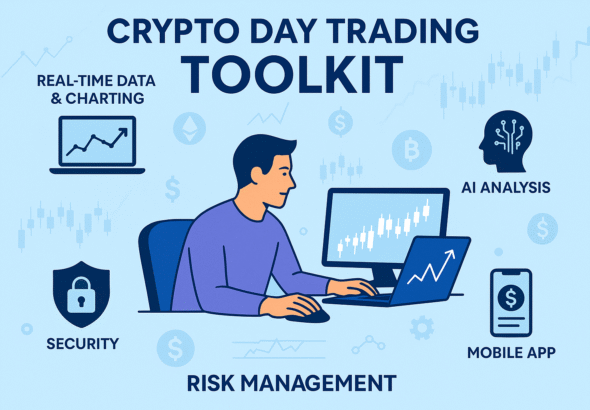
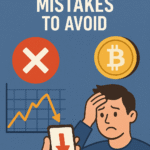

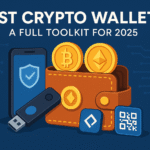

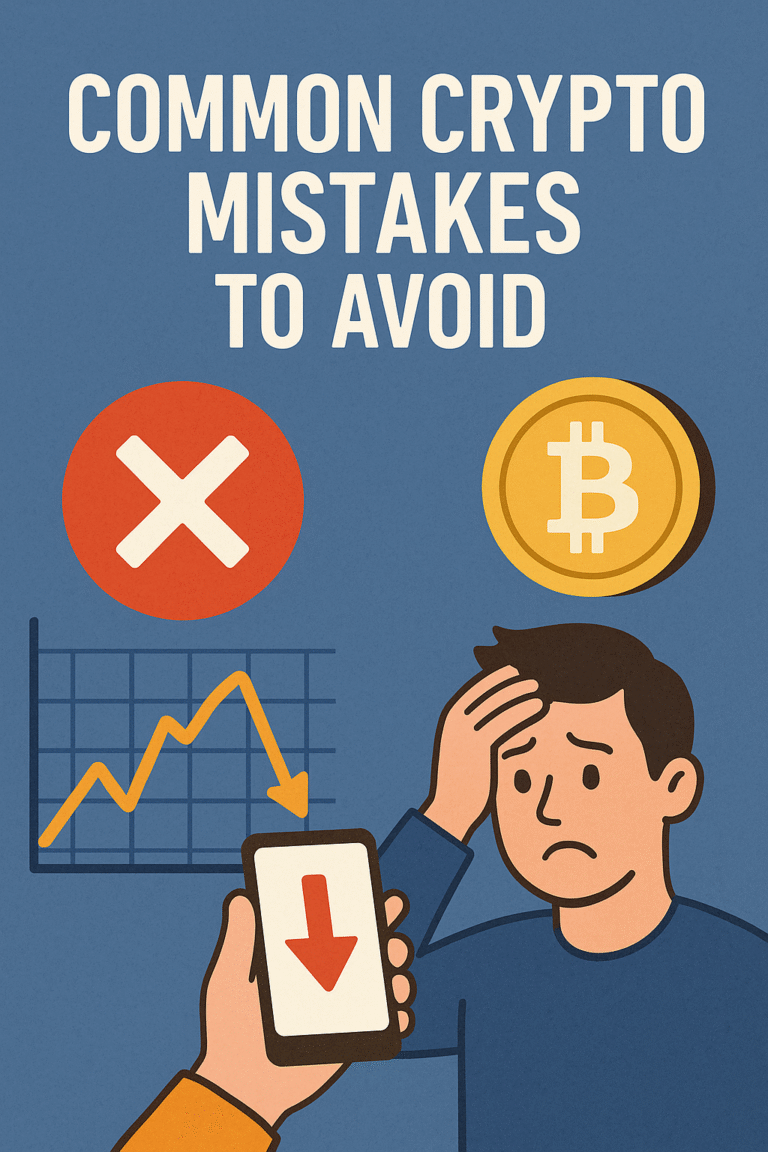

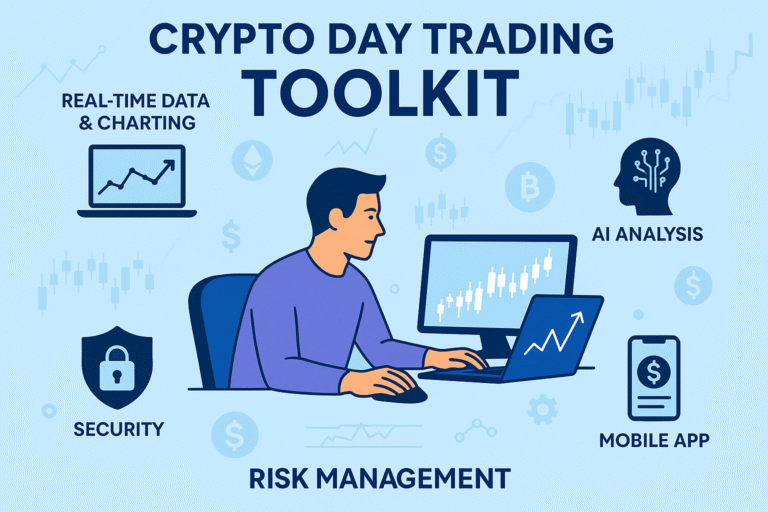

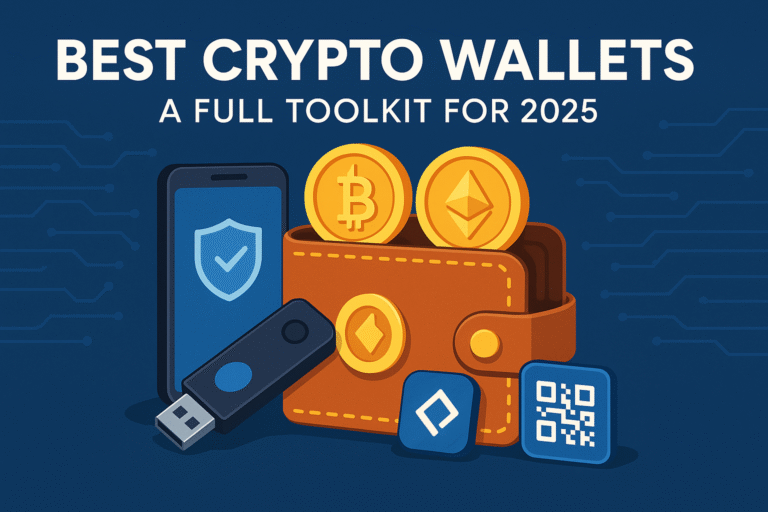
8 thoughts on “How to Avoid Crypto Scams and Secure Funds in 2025”
Comments are closed.